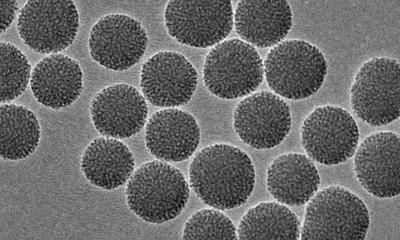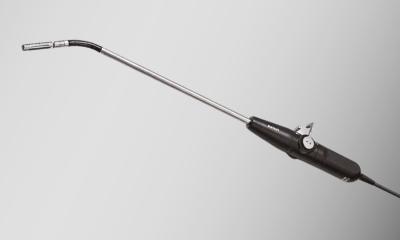Scanning children
Mark Nicholls reports on the CT v. US debate
A growing number of Dutch hospital doctors now favour ultrasound (US) over CT scans to detect appendicitis in children. This trend has re-opened the US v. CT debate over which diagnostic method is more effective, cost-effective and safest for a child's longer-term health needs.

Although Dr Herma Holscher, Head of the department of paediatric radiology at the Juliana Children’s Hospital, in The Hague, recognises this debate, particularly with hospitals in the USA still tending to perform more CT scans on children’s abdomens than those in Europe, she continues to advocate US for diagnosing appendicitis in terms of invasiveness, cost and radiation exposure. ‘Recent results of US in children are at least comparable with CT, which is also less desirable in children because of their lack of abdominal fat, so CT results are often disappointing,’ she explained. ‘A normal appendix can be visualised in about 80% of normal children.’
In recent years she has examined at the two methods and established clear classifications for diagnosing appendicitis using US. If the appendix is seen and is normal, or if it is not visualised but with no secondary signs of appendicitis, then there is no appendicitis,’ she explained. However, if the appendix is seen, and is enlarged and has signs of inflammation, or if the appendix is not seen, but there are secondary signs of appendicitis, then there is appendicitis.
Secondary signs include increased echogenicity of the appendix’ surrounding area, suggesting inflammation of mesenteric fat; local fluid collection suggesting an appendicular abscess; or local dilatation of the thin bowel without peristalsis indicating focal peritonitis, she explained, adding that, if they are present - without visualisation of the appendix – the diagnosis of appendicitis is very likely.
‘If no secondary signs are seen, appendicitis is very unlikely,’ Dr Holscher pointed out, adding that US advantages include speed, availability, non-invasiveness, and no radiation burden. ‘Clearly, US has no radiation exposure at all while there is the great concern about the long-term effects of CT radiation on children.’
Graded compression of the appendix with US can be painful, she agreed, but is generally well tolerated by all children.
US is also cheaper than CT. An ultrasound examination in the Netherlands costs around ?80, compared with ?300 for CT. More CT scans can be performed in an hour, but an ultrasound scanner is relatively maintenance-free.
Dr Holscher acknowledges that more research is needed on US v. CT, but suggested US v. MRI is now a ‘more interesting field of research’. However, she added: ‘Appendicular disease is still, and will always be, a challenge. Only with optimal interaction between paediatric surgeons and radiologists can good medical practice be performed.’
Child adiposity potentially makes US more difficult to perform, she also added. This is a lesser issue in Europe than in the USA, where legal issues are more significant, so CT may be preferred because it is better documented than ultrasound.
19.11.2008











